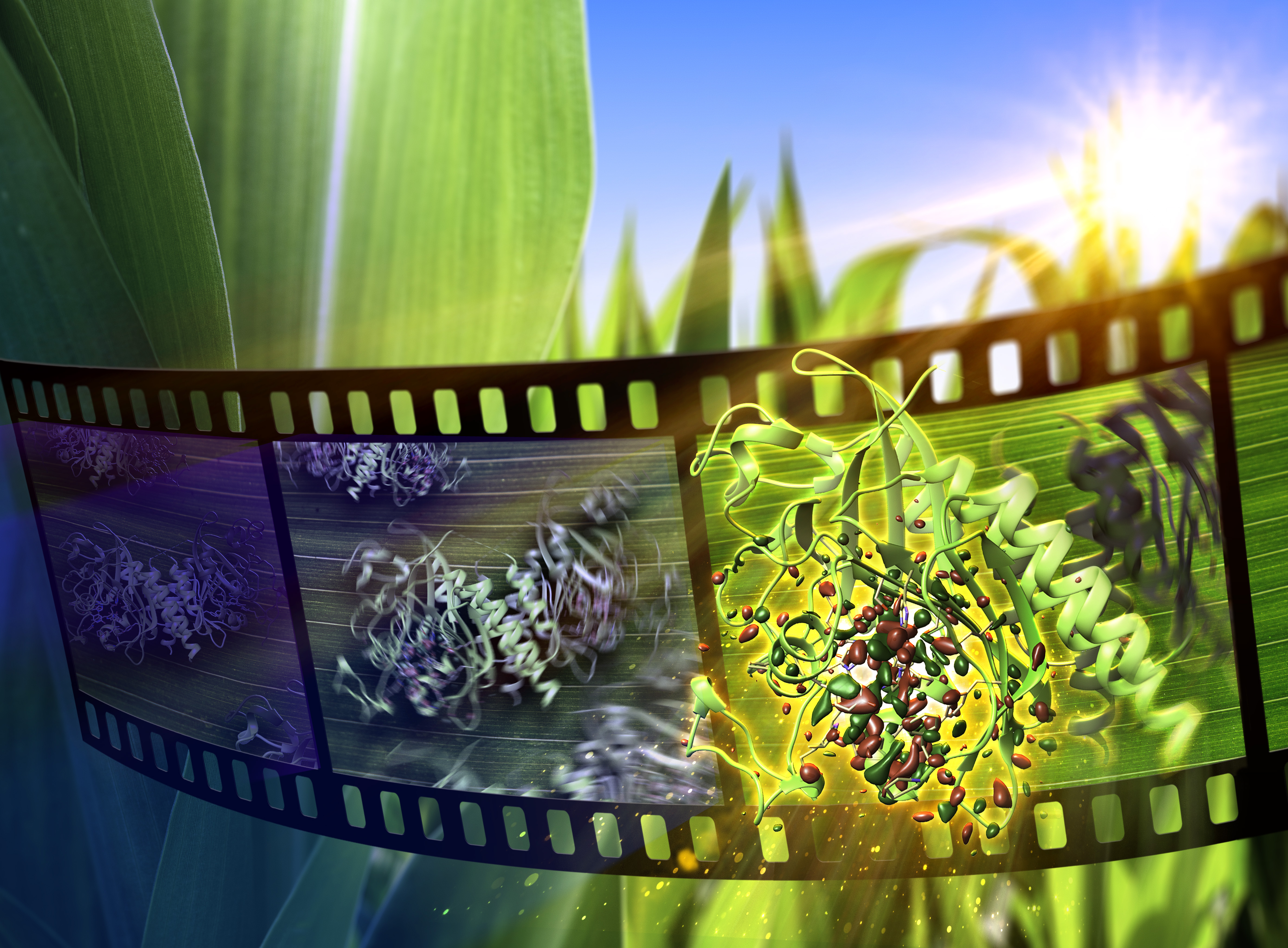
Popular Articles
- Earliest molecular events of vision revealed
- Dynamics and Kinetics in Structural Biology
- XFEL Pulses Demonstrate How Plants Perceive Light
- Structural biology is solved -- now what?
- BioXFEL Postdoctoral Fellowship Award
Archived Articles
- Details
- Tuesday, 07 April 2020

Plants perceive light through photoreceptors. For example they tend to grow away from shade, they start to get green once they grow out of the soil after germination, and they adjust their height based on the sunshine they receive.
The most important photoreceptor in plants are the phytochromes. They perceive hues of red light. Not surprisingly, homologous photoreceptors are also found in photosynthetic bacteria, since they also must orient with respect to light. However, the phytochromes are also found in non-photosynthetic bacteria and fungi. Although these organisms do not have to orient their photosynthetic machinery towards light, the phytochromes indeed providing them with a sort of primitive two-color vision in the red and in the far-red. As in any other light receptor, light is absorbed by a chromophore that is embedded in the protein. In bacterial phytochromes this chromophore is very often a biliverdin, a tetrapyrrole with four rings A-D, whose chemical structure resembles a cut-open heme (the heme is also found in human blood and in many other proteins). One of the rings, ring-D, isomerizes after photo-absorption about a double bound that connects rings C and D.
A team of scientists from Sweden, Finland, Japan and the United States led by University of Gothenburg researcher Sebastian Westenhoff and BioXFEL member Marius Schmidt from the University of Wisconsin-Milwaukee now showed, for the first time with time-resolved X-ray structures, how these photoreceptors respond to light. They used the ultrashort pulses from an XFEL to probe the structural changes of a bacterial phytochrome one picosecond (ps) after photoexcitation.
Already at 1 ps large structural changes can be observed. Ring-D of biliverdin rotates counterclockwise by 90o that induces large, collective structural changes of the protein surrounding the chromophore. Surprisingly, the pyrrole water that tightly coordinates to three nitrogens of the biliverdin chromophore is flashed away from its position. The biliverdin ring-D rotation and the pyrrole water displacement are important triggers to start the observed ultra-fast amino acid residue displacements in the protein. Structural changes must then be transduced more than 100 Å to an effector domain. The researchers use a truncated version of the phytochrome where the effector domain and an additional domain were missing. To show how the signal migrates from the epicenter of photo-absorption through an intact phytochrome will be subject to future investigations on these photoreceptors.
The paper ‘The primary structural photoresponse of phytochrome proteins captured by a femtosecond X-ray laser’ is published in the journal eLife and can be freely accessed online at https://doi.org/10.7554/eLife.53514.





